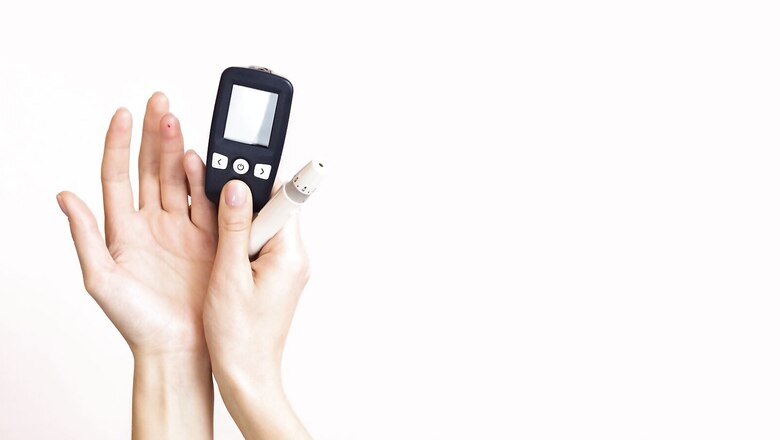
views
Diabetes is a condition that often has no noticeable symptoms, unless blood sugar levels become dangerously high or low. As a result, many individuals with uncontrolled diabetes can feel well and remain asymptomatic for a prolonged period until complications arise. This is a major reason why nearly 50% of diabetes cases in India remain undiagnosed. Regular testing is crucial for monitoring diabetes control, guiding treatment adjustments, and providing necessary advice. Individuals who monitor their blood sugar levels more frequently tend to be more health-conscious and willing to make lifestyle changes to address any issues, leading to better overall diabetes management. However, some individuals may avoid testing due to fear of facing the truth and how it may impact their lifestyle. This is a common coping mechanism, but it can ultimately hinder effective diabetes management.
There are various tests available to monitor progress and control in diabetes management. The urine glucose test was once commonly used to diagnose and monitor diabetes, but due to its inaccuracies and inability to provide quantitative data, it has been replaced by more reliable tests.
One such test is the Fasting and Postprandial Blood Sugar (FBS/PPBS) test, which is frequently performed in laboratories. This test measures blood sugar levels before and after a meal, providing a point-in-time assessment that is gradually being replaced by the more comprehensive HbA1c test.
The FBS/PPBS test has some advantages, such as being a quick and affordable test that is widely available in rural and remote areas. Fasting blood sugar tests are generally accurate. However, the PPBS test can be highly variable depending on the size of the meal, and both tests only provide a snapshot of blood sugar levels at a particular moment in time, rather than a measure of long-term control or trends.
HbA1c is a test that measures an individual’s diabetes control over the past 8-12 weeks. It assesses the level of sugar bound to red blood cells, which have a lifespan of 2-3 months. Doctors recommend HbA1c tests every 3-6 months, depending on an individual’s control status. However, only 13% of the diabetes population undergoes this yearly checkup.
One advantage of HbA1c is that it provides insight into long-term control, making it difficult to manipulate the results. However, it relies on laboratory testing and takes 3 months to change, which limits its usefulness for making short-term adjustments in day-to-day life.
Frequent home self-monitoring of blood glucose (SMBG) using a glucometer has been demonstrated to enhance overall glucose control. This approach has several benefits, including the convenience of conducting the test at home, affordability, and the ability to assess control at any time.
However, there are some drawbacks to consider. Self-monitoring is not as reliable as HbA1c, as meters have varying degrees of error. It can also be a painful test that requires effort and commitment. Additionally, SMBG provides only a snapshot of blood sugar levels at a given time and does not provide meaningful trends. Multiple readings are necessary before doctors can make informed decisions about treatment adjustments.
Flash glucose monitoring or continuous glucose monitoring (CGM) is a significant technological advancement compared to the traditional finger prick test. This method involves attaching a small patch, roughly the size of a 10 rupee coin, onto your arm to measure your blood sugar levels every minute. By scanning the patch with your phone or a reader, you can view your real-time readings, as well as your sugar trends and graphs for up to two weeks. This allows you to experiment and understand the impact of various foods, exercise, medications, and alcohol on your blood sugar levels. The time spent in range, between 70-180mg/dl, is an effective marker of your control and correlates with your Hba1c. In fact, time in range is increasingly replacing Hba1c as an emerging marker of overall control. You can even transmit your blood sugar readings in real-time to a family member or your doctor through the cloud.
CGM use has been shown to have several benefits, including improving Hba1c, reducing glucose fluctuations, weight loss, less hypoglycemia, and an improved quality of life. It can even be used as an educational tool to modify lifestyle and health habits. CGM is suitable for all age groups, from high-performance athletes to children and elderly individuals with poor vision.
While CGM has many advantages, it can be costly, ranging from 8-10k/month, and may cause anxiety due to the psychological burden of having too much information. Additionally, there may be a margin of error of up to 10%.
It’s essential to test regularly and select the right testing method. Avoid ignoring the issue and take the first step to diagnose and address it.
(With inputs by Dr Hema Venkataraman, Medical advisor, New Initiatives, Practo, Consultant Endocrinologist and Senior Lecturer, University Hospitals Birmingham, NHS, UK)
Read all the Latest Lifestyle News here



















Comments
0 comment